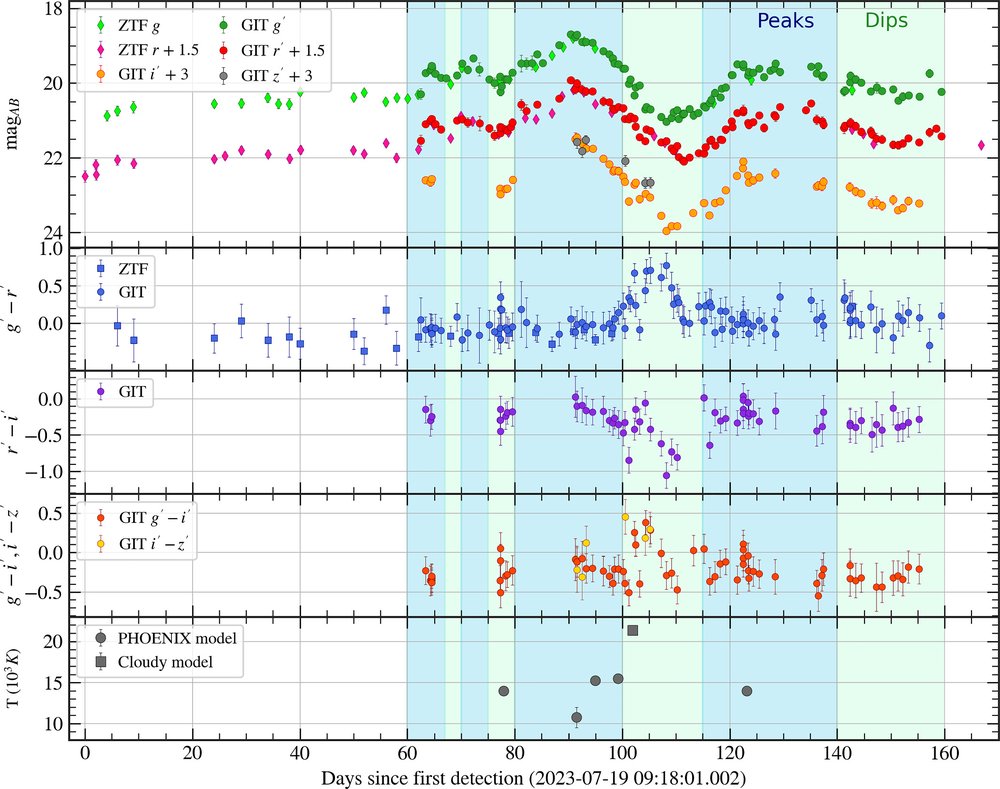RESEARCH HIGHLIGHTS | IIA
TweetDiscovery and detailed study of the M31 Classical Nova AT 2023tkw: evidence for internal shocks
JUDHAJEET BASU

We present a detailed analysis of an extragalactic slow classical nova in M31 exhibiting multiple peaks in its light curve. Spectroscopic and photometric observations were used to investigate the underlying physical processes. Shock-induced heating events resulting in the expansion and contraction of the photosphere are likely responsible for the observed multiple peaks. Deviation of the observed spectrum at the peak from the models also suggests the presence of shocks. The successive peaks occurring at increasing intervals could be due to the series of internal shocks generated near or within the photosphere. Spectral modeling suggests a low-mass white dwarf (WD) accreting slowly from a companion star. The ejecta mass, estimated from spectral analysis, is ~10−4 M⊙, which is typical for a slow nova. We estimate the binary, by comparing the archival Hubble Space Telescope data and eruption properties with stellar and nova models, to comprise a 0.65 M⊙ primary WD and a K iii cool evolved secondary star.